More dust, history and mystery
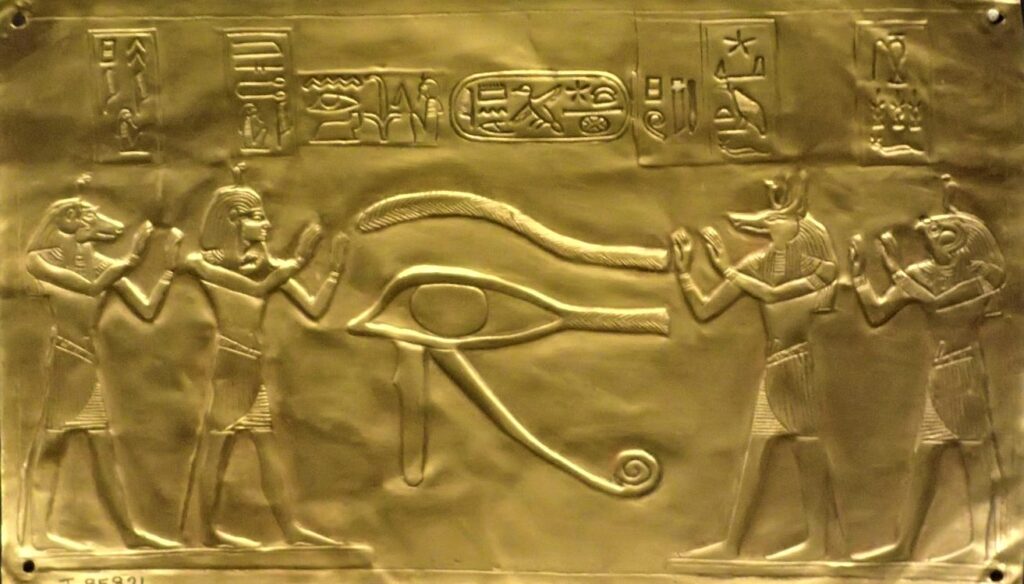
After walking from my Cairo apartment and along the Nile I was back at the Museum of Egyptian Antiquities (aka The Egyptian Museum) for another look around. Today it was time to climb the stairs onto the first floor, where the Museum’s vast collection of coffins and mummies was stored.
It can’t be denied that we humans have a fascination with ancient death rites and looking at long-deceased people. I’m not sure what the root of this attraction is; after all, it is still a dead person, something that we as living persons usually have an aversion to.
Perhaps we are more drawn towards viewing the Egyptian ancient dead as the preserving techniques used so long ago, and the country’s unique climate, ensure the individuals look remarkably good for their age. Is it ghoulish to want to view dead people? Look it probably is. But is it also amazing to gaze upon a human being that walked the earth thousands of years ago, and lies before you in an astonishingly near-intact (at least superficially) form? Undoubtedly.
Climbing the Museum’s stairs, I was confronted with a long gallery lined with dark wooden, glass fronted cabinets. Cabinet after cabinet held stack after stack of wooden coffins, some still containing the mummified deceased.
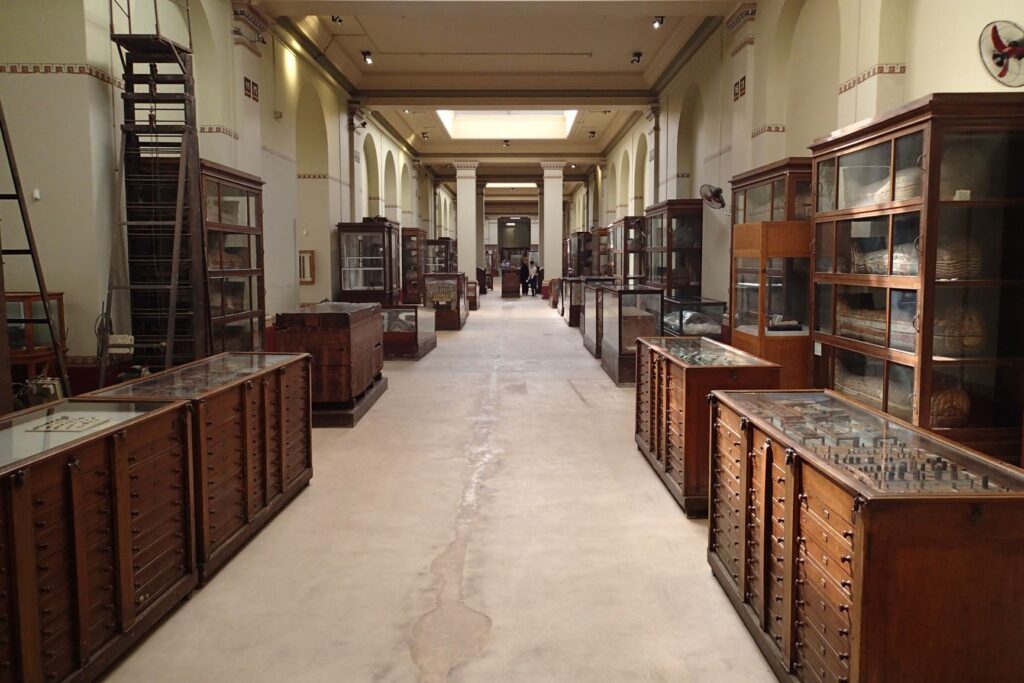
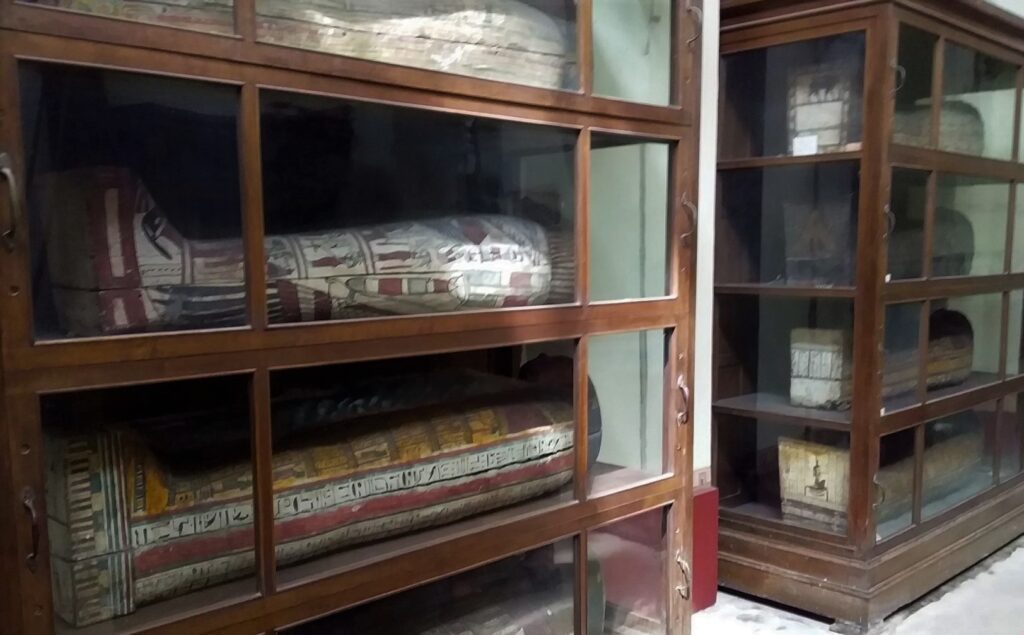
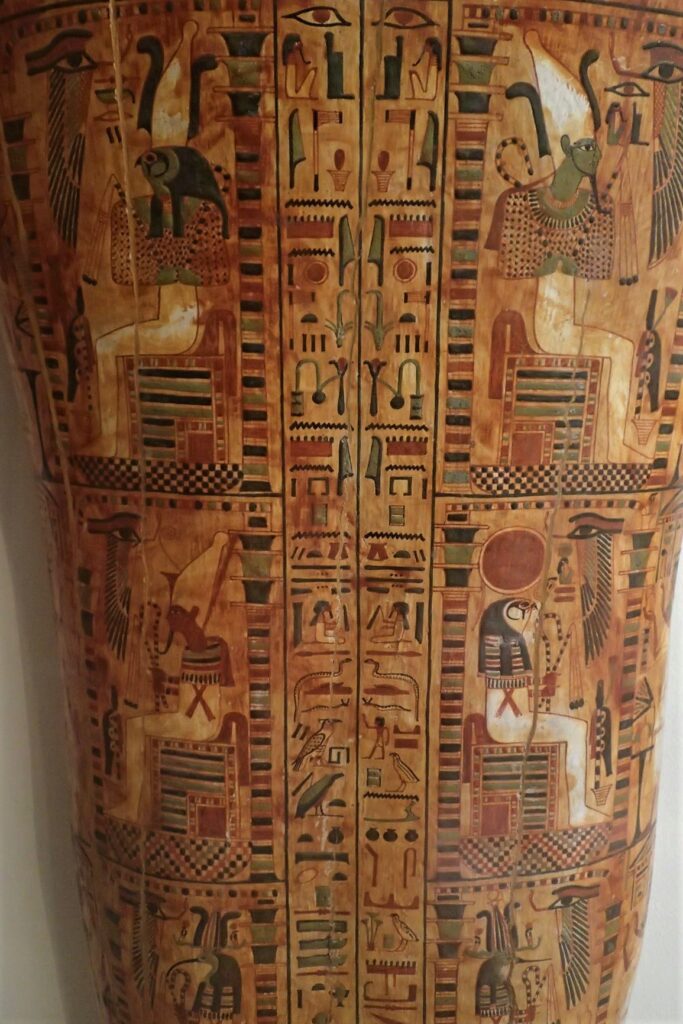
Many of the coffins were beautifully painted with incredibly detailed hieroglyphics and images of Egyptian gods. Tapered coffins, such as this one, are called ‘anthropoid’ as they follow the contours of the human form. Interestingly, sleeping bags that taper to the feet are referred to as ‘mummy’ shaped. I guess that’s a better name for marketing than ‘anthropoid’.
The older, rectangular-shaped coffins featured ‘wadjet eyes’, which permitted the dead to see into the world of the living.
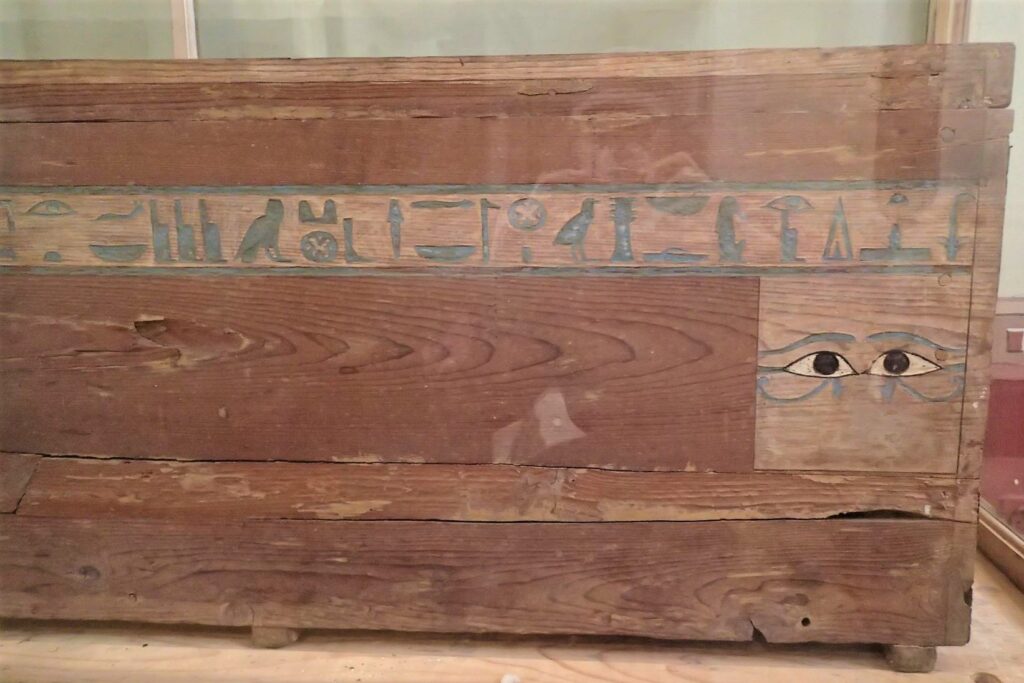
Ancient Egyptians, particularly the wealthy folks, were laid to rest in a series of funerary containers. These were a bit like a set of Russian dolls; you know, the little brightly painted wooded dolls of decreasing size that fit inside one another. This set belonged to a priest named Padiamun who was buried about 3000 years ago. Also included in Paddy’s set up was a ‘mummy’ board, which is a carved and painted board which rests atop the bandaged mummy. It looks similar to the lid of the anthropoid coffins.
I wandered through gallery after gallery of wooden coffins, some exquisitely ornate, others less so but still striking in appearance and antiquity. I then walked into the displays of coffins belonging to royalty, and my jaw literally dropped. These works of art were literally breathtaking.

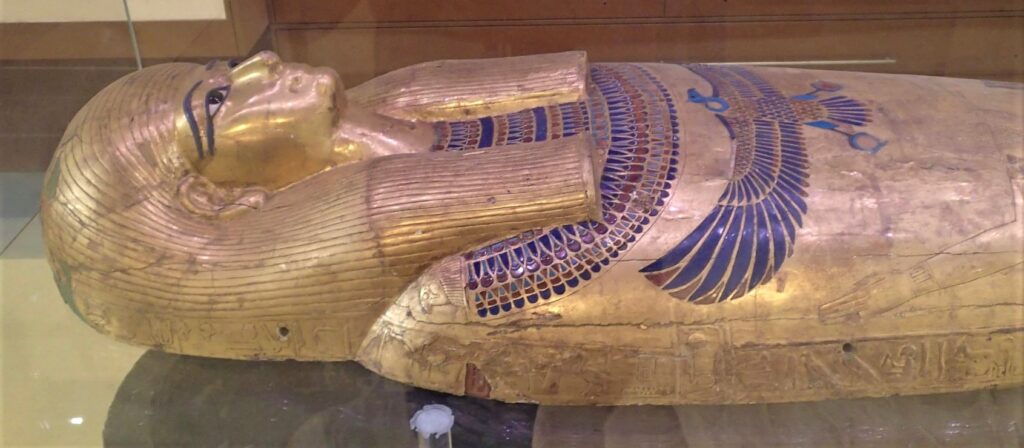
The Egyptian Museum’s ‘Royal Tombs from Tanis’ gallery held the treasure found by a French archaeologist north-east of Cairo in 1939, including coffins made of gold and silver, and gold funerary masks.
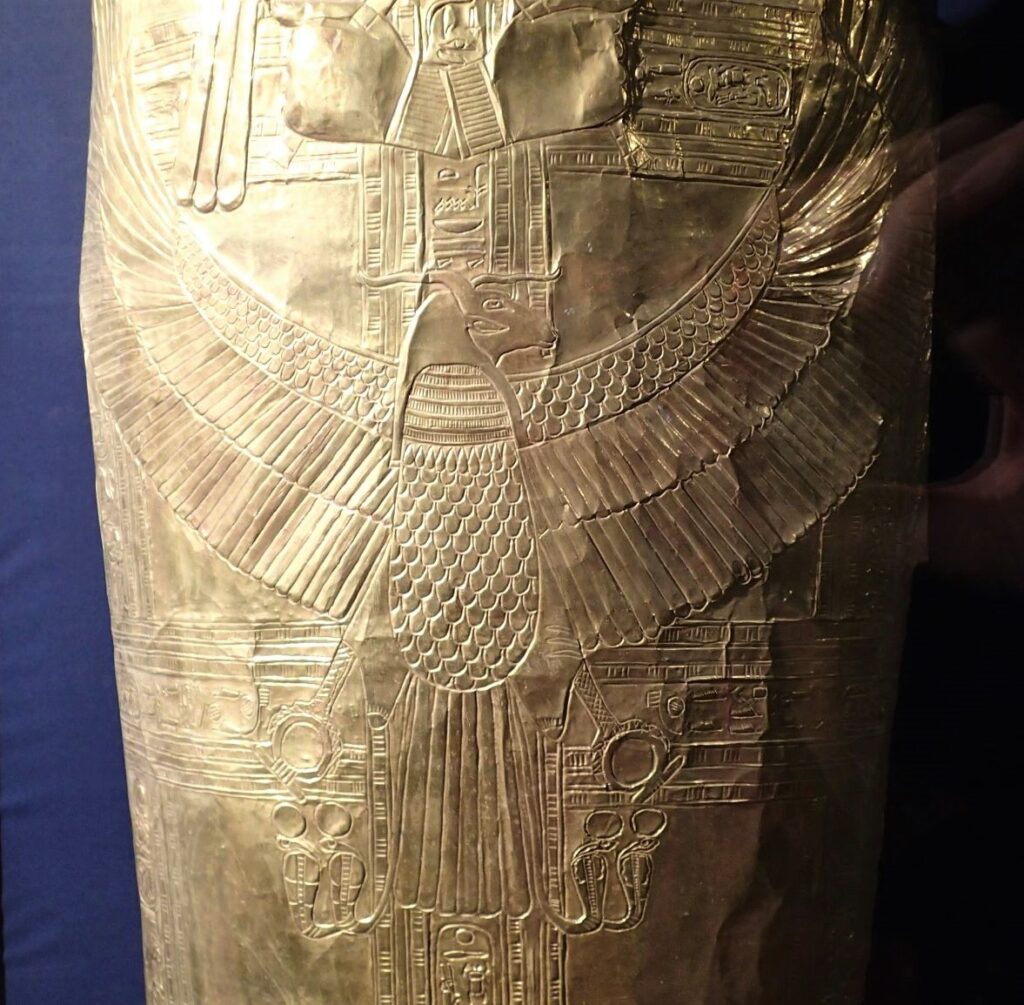
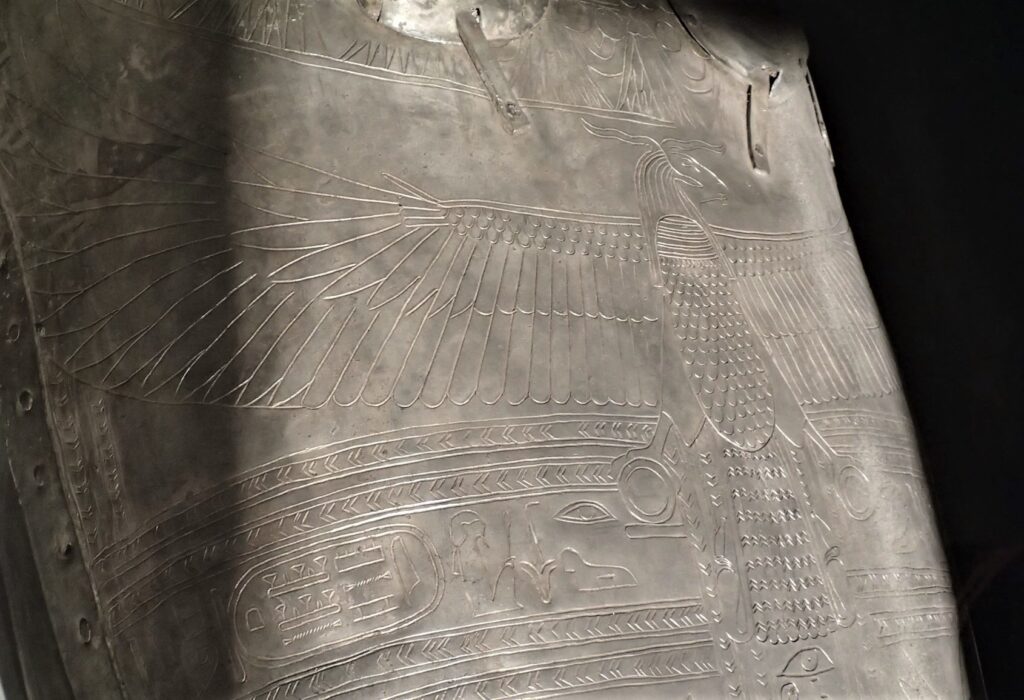
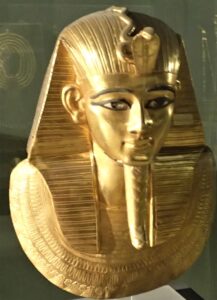
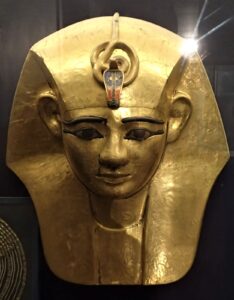
It is believed that funerary masks, created in the likeness of the deceased, allowed their spirit to recognise, return, and rest within them.
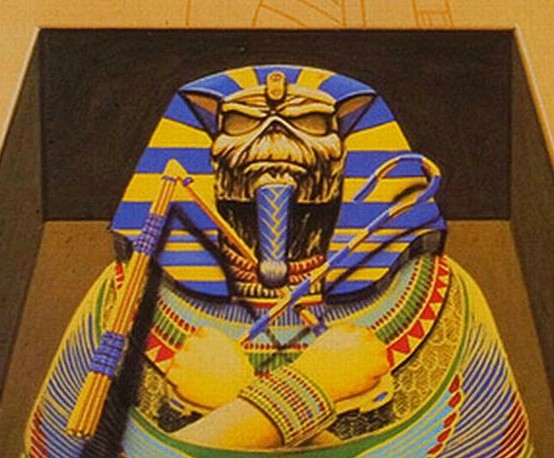
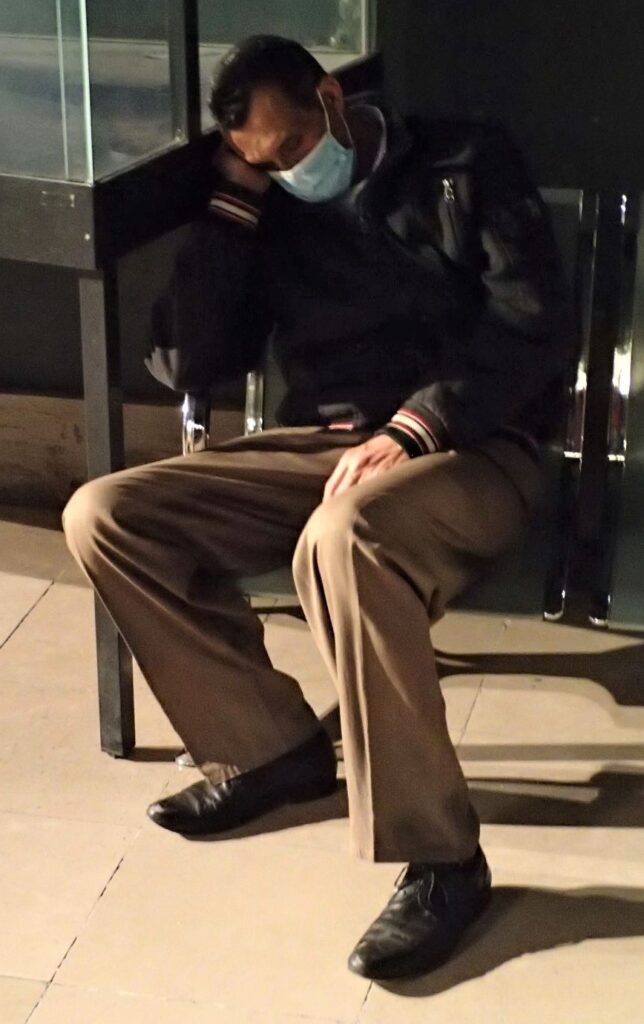
There are some areas of the Egyptian Museum that are off limits to photography, and to be honest I wasn’t sure whether I was supposed to take piccies in the ‘Royal Tombs from Tanis’ gallery. I would have asked the security guard, but I didn’t want to wake him.
Ahmed’s narcolepsy prevented him from ever working in the Tutankhamun exhibition
Inside the sarcophagus, inside the second anthropoid coffin, inside the first anthropoid coffin, beneath the mummy board, under the fabric wrapping and the death mask, the mummified ancient Egyptians look remarkably well preserved for their age. Remember Thuya, whose golden coffin we saw earlier? This is her in 2021, as a 3000 something.
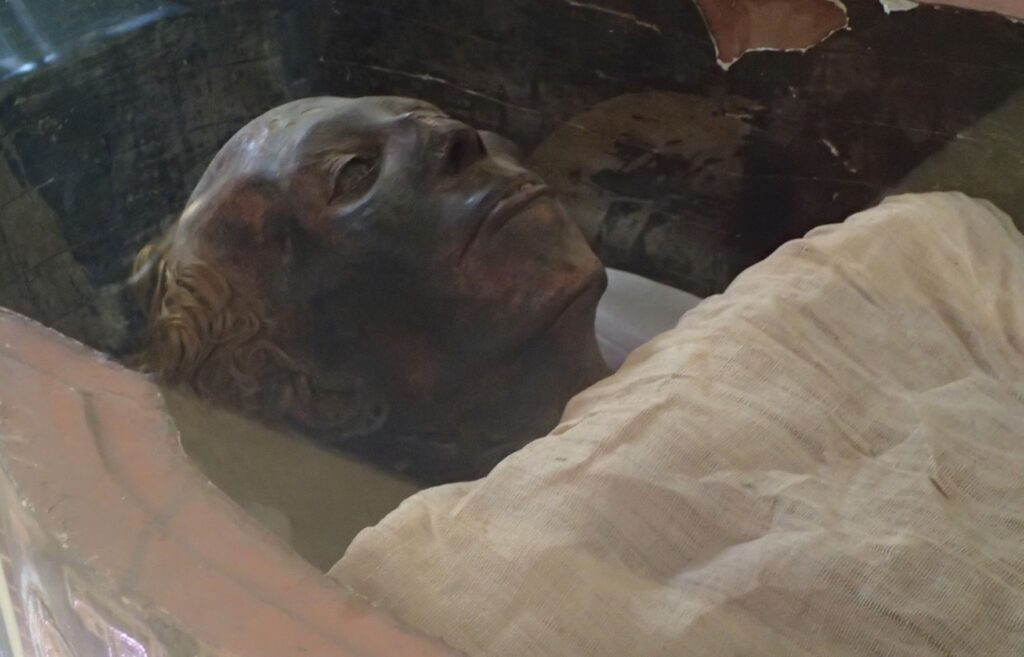
The olden days’ Egyptians didn’t just mummify humans, but also a range of other animals too including horses, cattle, sheep, dogs, cats, birds, fish, crocodiles and monkeys. These were added to the tombs of the deceased to provide companionship in the afterlife, or in the case of sacred animals buried in their own tombs. Some mummified animals were offerings to the gods, whilst cuts of meat and prepared birds were also preserved to provide food for the dead.
Not only did the ancient Egyptians have bin chickens and boomerangs (see A Day at the Museum), they had barramundi too! Ok so they’re not exactly the same as the Aussie fish: same genus, different species. This giant was mummified and buried.

With an hour to go before closing, I realised I would have to return for a third day to see the remainder of the exhibits. But before I wandered off home, I thought I’d have a look at the Egyptian Museum’s biggest attraction: the priceless treasure recovered from the tomb of Tutankhamun. It would be a bummer of epic, dare I say pharaonic proportions if I returned the next day to find the Boy King’s gear had been packed up overnight ready to be moved to the new museum in Giza. So I took my place in the queue, not fully realising what I was about to witness…
For more on the Egyptian Museum click here
If you enjoyed this post, you may also like A Day at the Egyptian Museum, Tutankhamun: The Boy King
Leave a Reply